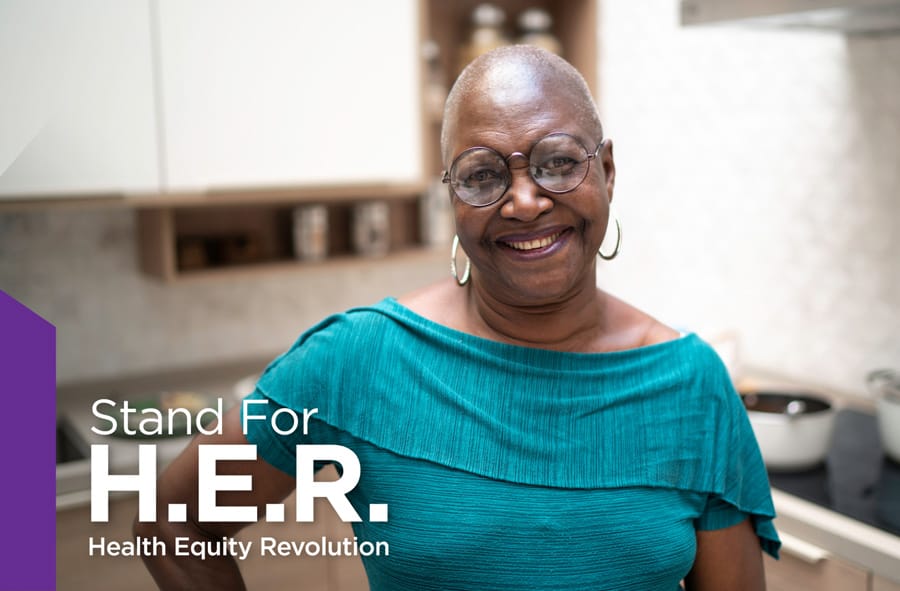
Natasha Mmeje, MPH
Director, Community Education and Outreach
Omatola Gordon-Rose, MPH, GCBM, DrPHc
Sr. Director, Health Equity Initiatives
Increasing Access to Quality Healthcare is Important to Achieve Health Equity
The celebration of Black History month in the U.S. reminds us to focus on the copious ways Black people have made an immeasurable impact on our world. It is also important that we reflect on the ways that slavery and its aftereffects have negatively impacted Black people and continues to do so. Imagine two women in the same city in the U.S., one Black and one white, go to receive a diagnostic breast exam from their health care provider. Both are insured. They are the same age. It would seem as though these two women should receive the same types of services and, upon diagnosis, the same level of treatment. However, this is not always the case in a health care system that is riddled with inequities.
Health Care Access and Quality are important when considering the Social Determinants of Health. They are one of the key domains in Healthy People 2030. For example, when discussing breast cancer, quality health care involves increased access, increased health care coverage and timely care; and is achieved when everyone has access to high-quality health care with competent medical providers in their community.
ACCESS TO QUALITY CARE AND HEALTH CARE
Susan G. Komen’s report Closing the Breast Cancer Gap: A Roadmap to Save the Lives of Black Women in America outlines the findings regarding healthcare access and quality for Black women. From it, we see clearly that the quality of health care is segregated. For example, for many of the metro areas of focus, National Cancer Institute-Designated cancer centers and major academic institutions were in white neighborhoods. At the same time, Black communities are often supported by community clinics that often do not meet quality standards of care. In addition, issues such as lack of transportation and needing to take time off work because of the distance were barriers to accessing better care, especially for those who are low-income.
The level and type of health insurance is also a factor. People with private health insurance may have more coverage than those on exchange plans or Medicaid. Many health care facilities that provide high-quality care do not take patients who are on Medicaid, Medicare or other lower-cost health exchange plans. As a result, Black women who are on these plans often feel they are discriminated against even when the hospital accepts that insurance. Additionally, patients in states that did not expand Medicaid may have even less coverage or not be eligible for coverage.
High-quality care may be inaccessible if the medical providers do not partner with their patients. Unfortunately, Black women who try to make decisions for their health or practice self-advocacy within the health care setting are often ignored or met with disapproval. The Closing the Gap report found that for some women, experiences of not being listened to by their providers led to delays in treatment and deepening mistrust. Qualitative data from the report also shows experiences of personally mediated racism and bias by medical providers.
PARTNERSHIP TO IMPROVE STANDARDS
In the Closing the Gap report, one of the recommended strategies to address health equity is to support quality improvement initiatives from screening through treatment. Komen took this recommendation seriously and has partnered with the American Society of Clinical Oncology (ASCO) through their Quality Oncology Practice Initiative to improve breast cancer treatment at quality health facilities in the targeted communities. A cohort of oncology practices participates in a structured quality improvement program for health care providers at clinical sites in targeted cities. Each of the practices is working on a Quality Improvement project that allows them to solve a quality problem targeting Black patients in their clinical setting with guidance from experienced coaches and faculty.
As a product of the segregated health care system, these selected practices who service a significant percentage of Black and other historically marginalized populations often do not have the funding or capacity to participate in this type of quality improvement experience. Nevertheless, this is one step toward achieving health equity which must be achieved because equity is not equality.



